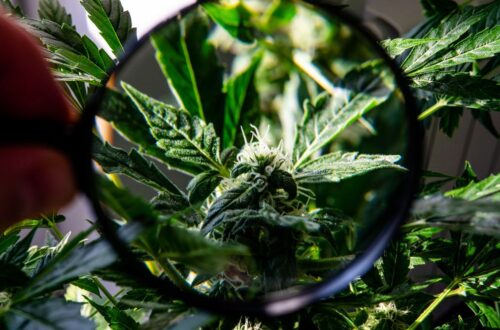THCa Flower Potency for Optimal Benefits
In recent years, the cannabis industry has seen a surge in interest surrounding THCa, a non-psychoactive cannabinoid found in raw and live cannabis. As more consumers seek the therapeutic benefits of cannabis without the high associated with THC, understanding the potency of THCa flowers becomes increasingly important. This article explores the THCa flower potency and how it can be optimized for maximum benefits.
Understanding THCa: The Basics
THCa, or tetrahydrocannabinolic acid, is the acidic precursor to THC, the compound responsible for the psychoactive effects of cannabis. THCa is found in raw cannabis plants and converts to THC through a process called decarboxylation, which occurs when the plant is exposed to heat. Unlike THC, THCa does not produce a high, making it an attractive option for those seeking the medicinal benefits of cannabis without the psychoactive effects.
Benefits of THCa
Research suggests that THCa may offer a range of therapeutic benefits, including:
- Anti-inflammatory properties
- Neuroprotective effects
- Anti-emetic (anti-nausea) benefits
- Potential anti-cancer properties
These potential benefits make THCa a promising compound for further research and application in medical treatments.
Measuring THCa Potency
Determining the potency of THCa in cannabis flowers involves measuring the concentration of THCa present in the plant material. This is typically expressed as a percentage of the total weight of the flower. High-potency THCa flowers contain a greater concentration of THCa, which can enhance the therapeutic effects experienced by the user.
Factors Influencing THCa Potency
Several factors can influence the potency of THCa in cannabis flowers, including:
- Genetics: Different cannabis strains have varying levels of THCa.
- Growing conditions: Light, temperature, and nutrients can impact THCa levels.
- Harvesting and curing processes: Proper techniques can preserve THCa content.
Understanding these factors can help growers and consumers select and cultivate cannabis strains with optimal THCa potency.
Optimizing THCa Benefits
To maximize the benefits of THCa, consumers should consider several strategies when selecting and using THCa-rich cannabis flowers.
Choosing the Right Strain
Different cannabis strains offer varying levels of THCa. Some popular high-THCa strains include:
- ACDC
- Harlequin
- Cannatonic
These strains are known for their high THCa content and minimal THC levels, making them ideal for those seeking therapeutic benefits without psychoactive effects.
Consumption Methods
To preserve THCa and prevent its conversion to THC, consumers can explore various consumption methods, such as:
- Juicing raw cannabis leaves
- Using THCa tinctures or capsules
- Incorporating THCa into smoothies or salads
These methods allow users to experience the benefits of THCa without the psychoactive effects of THC.
Case Studies and Research
Several studies have highlighted the potential benefits of THCa. For instance, a study published in the British Journal of Pharmacology found that THCa exhibited anti-inflammatory properties in animal models. Another study in the Journal of Neuroimmune Pharmacology suggested that THCa might have neuroprotective effects, which could be beneficial for conditions like Parkinson’s disease.
These findings underscore the need for further research into the therapeutic potential of THCa and its applications in medical treatments.
Conclusion
THCa offers a promising alternative for those seeking the therapeutic benefits of cannabis without the psychoactive effects of THC. By understanding the factors that influence THCa potency and exploring various consumption methods, consumers can optimize their experience and harness the full potential of this non-psychoactive cannabinoid. As research continues to uncover the benefits of THCa, it is likely to play an increasingly significant role in the cannabis industry and medical treatments.





